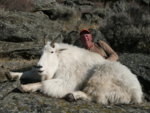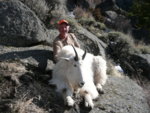FishfinderAK
Lil-Rokslider
- Joined
- Sep 25, 2015
- Messages
- 195
Hi all-
I’ve done a few goat hunts, and after each one say, “dang! next time I’m taking a rope”. ....but never do.
So for you guys that do take rope, what kinda rope do you take? Obviously something with great strength to weight ratio.
How about a light weight harness?
Yes, no matter what I get I’ll learn hop to properly use it.
Thanks for any advice!
I’ve done a few goat hunts, and after each one say, “dang! next time I’m taking a rope”. ....but never do.
So for you guys that do take rope, what kinda rope do you take? Obviously something with great strength to weight ratio.
How about a light weight harness?
Yes, no matter what I get I’ll learn hop to properly use it.
Thanks for any advice!


